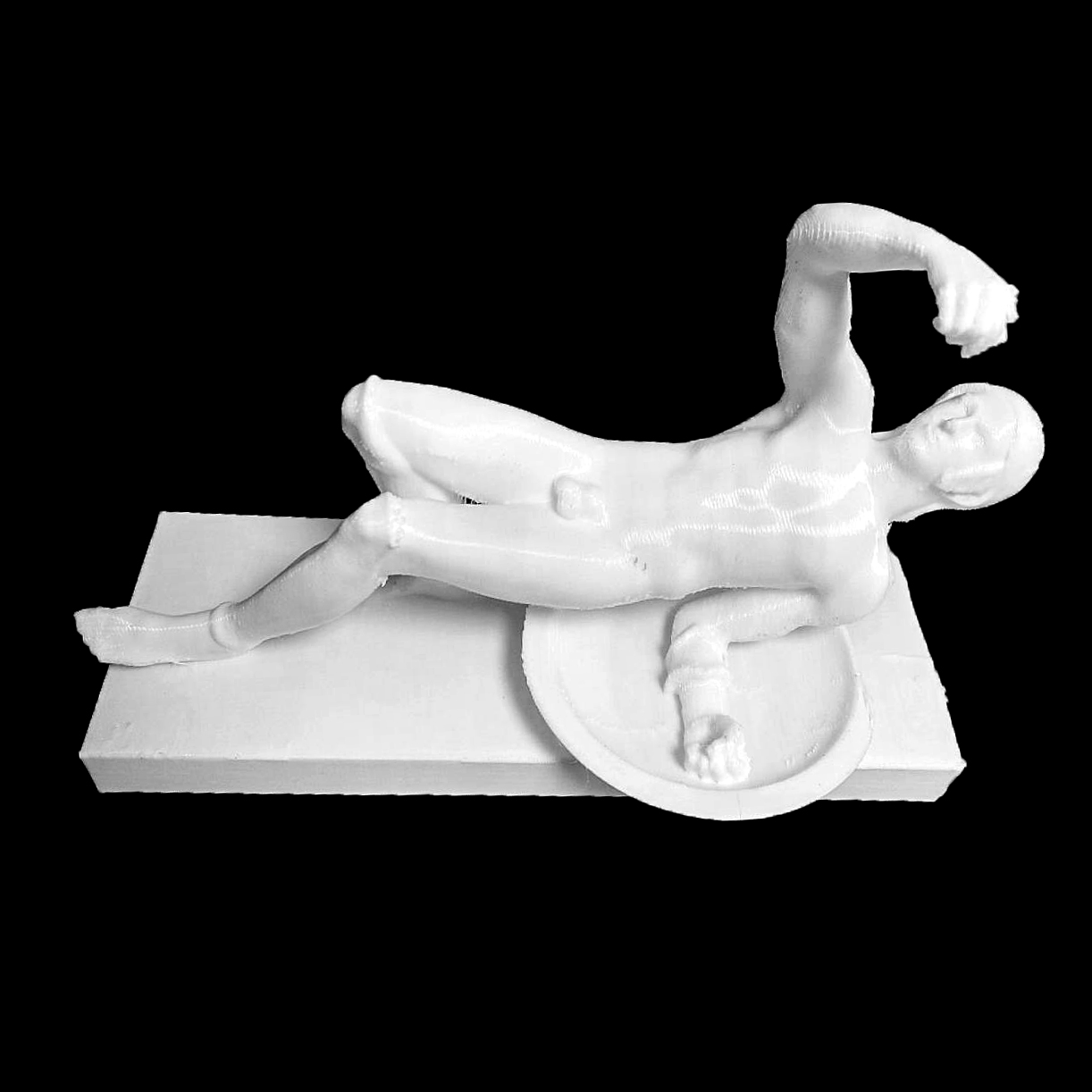
Falling Warrior- Temple of Aphaia
myminifactory
Athena stands tall in the center of the pediment, her presence commanding attention as a fierce battle rages on either side of her. Warriors, armed but nude, clash in a frenzy of movement, their muscles rippling beneath their skin. The exception to this rule are the archers, one clad in Oriental fashion and the other wearing a traditional short chiton under cuirass. This scene appears to represent the later Trojan War described by Homer in vivid detail. The pediment focuses on the exploits of a second generation of Aeginetan heroes who fought alongside the Greeks, with Athena's prominence being an unusual but crucial element. Athena's presence here is distinct from her appearance in the East Pediment, where she witnesses or oversees the battle. In the West Pediment, however, she stands quietly aloof and uninvolved, as if existing on a different plane. She makes no gesture towards the warriors and signals no individual support, her presence not dividing the pediment like it does in the east. The designer has treated the field of the West Pediment differently, with the two forces appearing to be equally distributed throughout. This allows for a traditional compositional scheme of paired opponents fighting one on one, creating three pairs on each side of Athena. The two pairs of warriors closest to Athena are likely to represent the victorious heroes of the battle. On the Aeginetan side, this should be Ajax. However, Figure W2, situated to the right of Athena, has no characteristics that permit identification. To W9 (little remains of the figure) on the left of Athena, Ohly assigns a shield, one of two that preserve the painted device which originally decorated each shield. This device depicts an eagle with a snake, a symbol connected to Ajax by Pindar's description of the eagle as the sign sent to announce his birth and the origin of his name. Given the direct connection between Pindar and Aegina and his evident knowledge of the pediments, this evidence is significant. The shield of W10's opponent has also survived with paint intact, featuring the forepart of a boar, but insufficient information connects it to a hero. If W9 and W10 represent Ajax and his Trojan opponent, then W2 and W3 should represent a Trojan and Greek warrior, respectively. On either side of the Champion warrior pairs are the archers. W11, on the left, wears the long-sleeved, long-legged dress with leather cuirass and hat of an Easterner, suggesting he represents Paris. His counterpart W4 on the right is likely to be Teucer, Ajax's brother and a renowned archer in the later Trojan campaign. The style of his short chiton and cuirass contrasts with W11, supporting his Greek lineage. The archers' opponents, both victims of arrows, lie in the corners. The dying warrior W14 in the left corner is thus Greek; the figure W7 with an arrow in his chest is Trojan. The archers and their victims frame a last pair of Greek and Trojan opponents in each case, creating an even match on the battlefield. The West Pediment (known as West Pediment 2) was preceded by a slightly earlier pedimental group (West Pediment 1). Unlike East Pediment 1, West Pediment 1 may not have reached completion, with no extra set of geison blocks or acroterion found. The style and date of the two west pediment groups are much closer than those in the east. It is possible that West Pediment 1 was still under construction when a decision was made to replace the sculpture. Such fragments as do exist indicate a battle theme, with it being tentatively suggested that the subject of W.P.1 was an Amazonomachy, which would parallel the Late Archaic temple in Aegina nearby. A new and fuller publication by Martha Ohly Dunn of both the earlier groups, together with West Pediment 2, is pending.
With this file you will be able to print Falling Warrior- Temple of Aphaia with your 3D printer. Click on the button and save the file on your computer to work, edit or customize your design. You can also find more 3D designs for printers on Falling Warrior- Temple of Aphaia.
